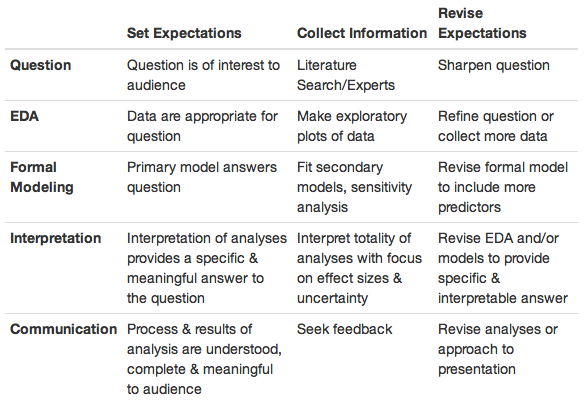2.2 Epicycle of Analysis
There are 5 core activities of data analysis:
Stating and refining the question
Exploring the data
Building formal statistical models
Interpreting the results
Communicating the results
These 5 activities can occur at different time scales: for example, you might go through all 5 in the course of a day, but also deal with each, for a large project, over the course of many months. Before discussing these core activities, which will occur in later chapters, it will be important to first understand the overall framework used to approach each of these activities.
Although there are many different types of activities that you might engage in while doing data analysis, every aspect of the entire process can be approached through an iterative process that we call the “epicycle of data analysis”. More specifically, for each of the five core activities, it is critical that you engage in the following steps:
Setting Expectations,
Collecting information (data), comparing the data to your expectations, and if the expectations don’t match,
Revising your expectations or fixing the data so your data and your expectations match.
Iterating through this 3-step process is what we call the “epicycle of data analysis.” As you go through every stage of an analysis, you will need to go through the epicycle to continuously refine your question, your exploratory data analysis, your formal models, your interpretation, and your communication.
The repeated cycling through each of these five core activities that is done to complete a data analysis forms the larger circle of data analysis (See Figure). In this chapter we go into detail about what this 3-step epicyclic process is and give examples of how you can apply it to your data analysis.

Epicycles of Analysis